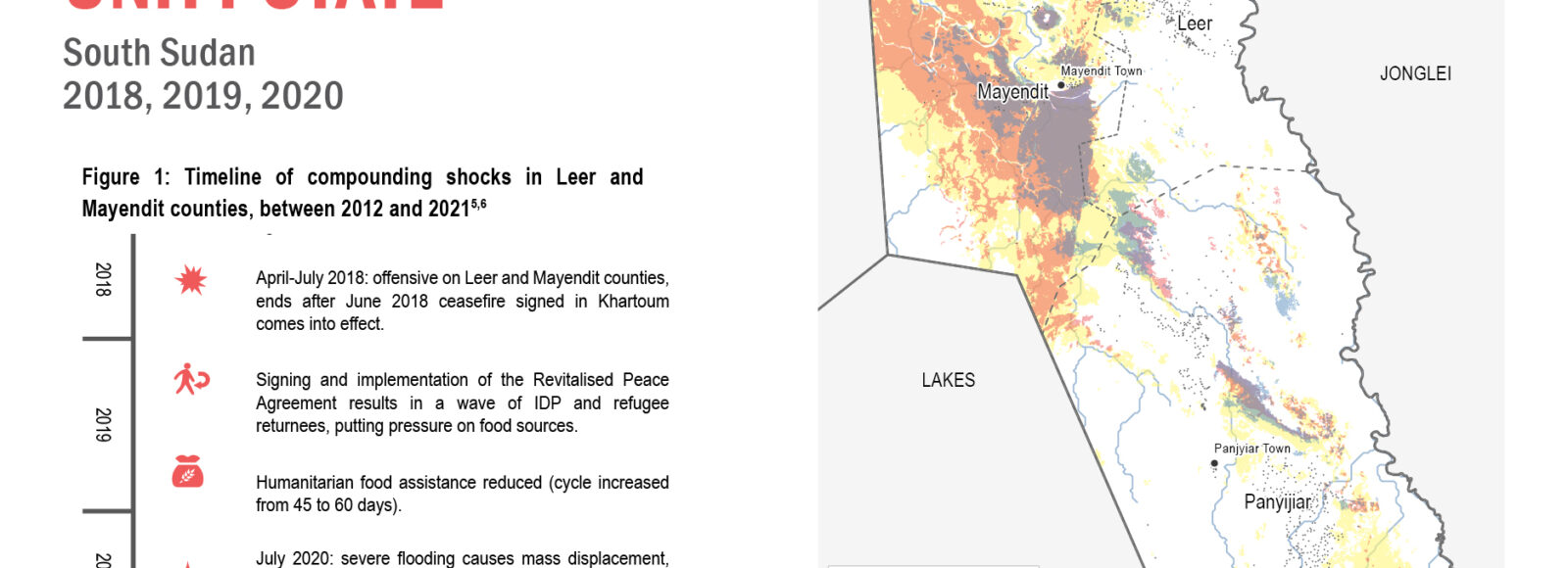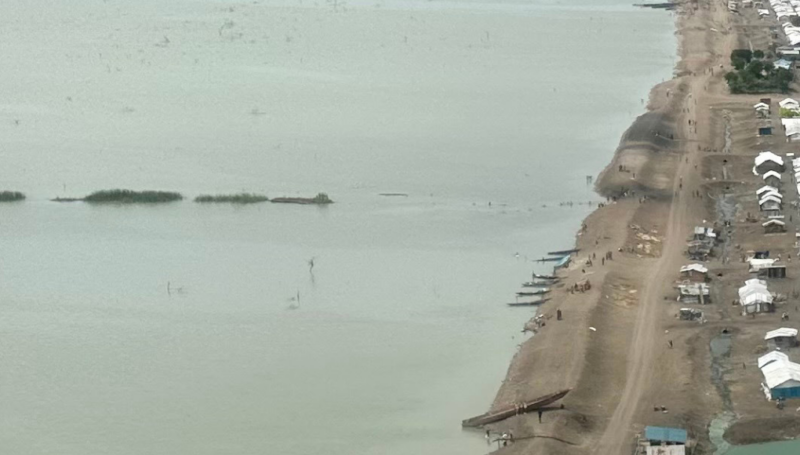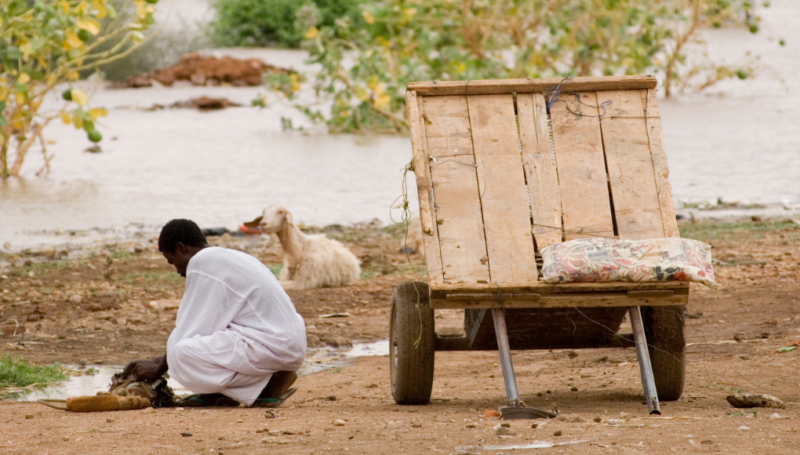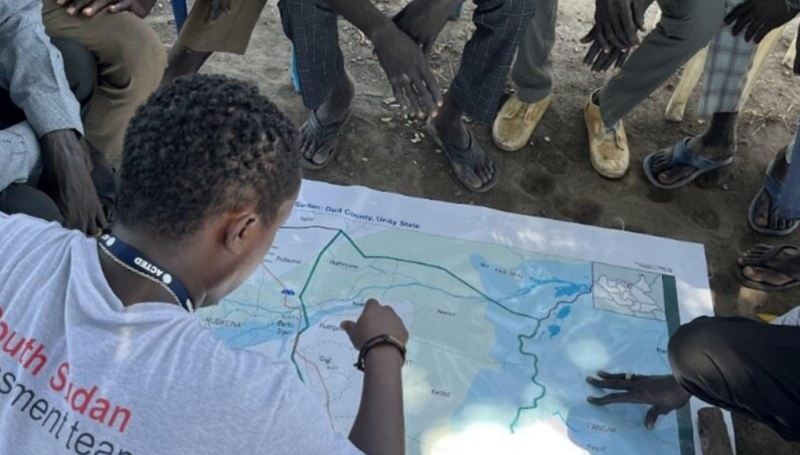An estimated 780,000 people in 31 counties were reported as affected by flooding in South Sudan since May. People in Jonglei, Unity and Upper Nile states, are the worst affected by the floods. Flooding has led to widespread collapse of livelihoods, severely affecting the ability of households to maintain livestock decreasing community and household coping capacities.
Fangak County is one of the hardest hit by recent floods in #SouthSudan
Nearly 70,000 people are struggling to survive.
WFP is supporting families with food assistance and sandbags to fortify their dykes pic.twitter.com/y06aj4dzV7
— WFP South Sudan (@WFP_SouthSudan) November 10, 2021
Is climate change behind these recurring floods?
- Rainfall patterns have also drastically changed since previous years. In 2020-21, Fangak has experienced four flooding events. Unusually, flooding in January 2021 occurred outside of the rainy season, indicating that rainfall is not the only trigger for flooding in the county. Rather, it is likely that excess water coming from upstream overwhelmed the absorbing capacity of the local swamps , which may have still contained water from the previous rainy season. Flooding has something to do with high water levels upstream in Uganda, including in Lake Albert and Lake Victoria. This was likely also a cause for the historically high flooding in 1962.
- Floods in Fangak are move severe than in previous years, driving large-scale displacement throughout 2021. Widespread livelihood collapse has been compounded by a reported inability to depend on traditional coping strategies and income generating activities. Flooding has prevented people from cultivating their lands since 2020, and has resulted in populations converging on highlands and further to Sudan. Given the trends of floods it is difficult for communities to continue living in Fangak, alternative measures for livelihood are important.
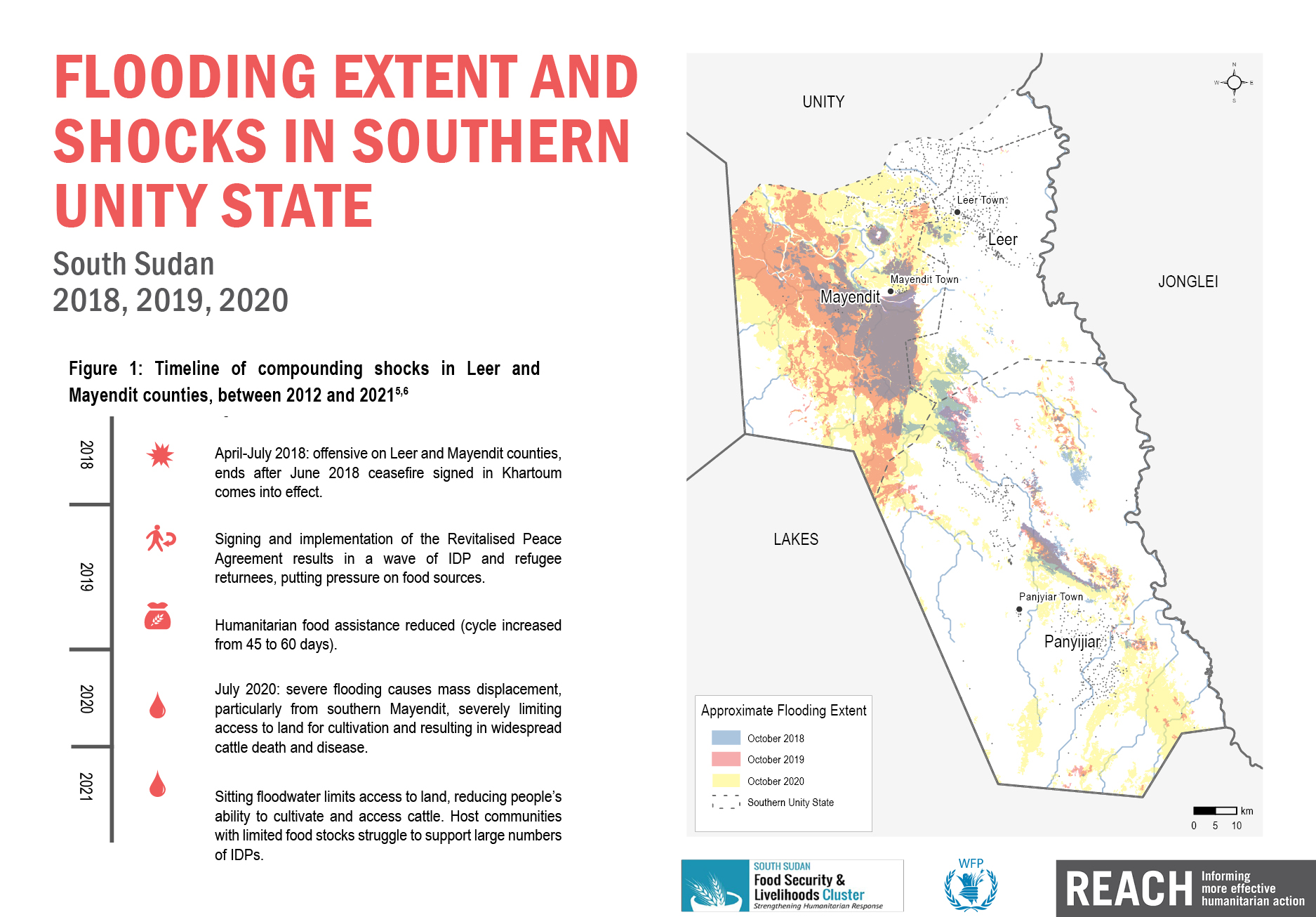
Practically what does it mean for affected South Sudanese?
In Canal/Pigi
- Canal-Pigi County has seen two years of consecutive flooding since August 2020 and at the time of the assessment still remained flooded, with flood waters unlikely to recede anytime soon. Flooding has led to widespread collapse of livelihoods, severely affecting the ability of households to maintain livestock, and decreasing community and household coping capacities.
- Due to flooding, dependence on traditional coping strategies and income generating activities have reportedly been severely affected. The loss of traditional livelihoods along with reportedly minimal access humanitarian services is increasing food insecurity in the county.
- Flooding has reportedly led to displacement in the county with the majority of communities moving to the highlands along the Nile and Sobat rivers, as well as along the Jonglei canal. This displacement has led to the emergence of entirely new settlements and has substantially increased the size of other settlements in these areas. Displacement has further added pressure of an increasing internally displaced peoples population on host communities resources.
- Humanitarian service providers have reported that response remains challenged by the floods with disruptions and delays in services.
In Fangak
- Widespread livelihood collapse has been reported across the county, compounded by inability of households to depend on traditional coping strategies and income generating activities. Flooding has prevented people from cultivating their lands since 2020, and has resulted in populations converging on highlands and moving further to Sudan.
- Flooding events have also had a detrimental effect on people’s access to shelter, as the traditional style of houses, tukuls, are often constructed with mud and grass, and are unable to sustain longer periods of flooding.
- Flood severity and risk in Fangak county has increased over the years. The extent of floods and the time it takes for flood waters to recede has increased exponentially.
- Many households will now go two years without cultivation, whilst facing a reduction in access to cattle, whilst increased dependency on wild foods and other coping strategies have been limited due to the remaining flood waters
What is the outlook?
In Leer and Mayendit counties
- A series of compounding shocks and protracted stressors, such as insecurity and cumulated atypical rainfall, have eroded the viability of traditional livelihoods Leer and Mayendit counties, resulting in substantial food consumption gaps particularly among IDP and returnee communities. Cultivation and cattle keeping have been particularly affected, resulting in substantial food consumption gaps, especially for internally displaced persons (IDPs) and returnees. Populations reportedly face substantial barriers to adapting livelihood activities, and consequently primarily consume wild foods and humanitarian food assistance. Existing barriers to food, such as a lack of access to livestock and land, and time poverty, may be further exacerbated by a third year of atypical rainfall. In the coming months, the risk of malnutrition and morbidity could be further compounded by increasingly limited provision of, and access to, water, sanitation and hygiene, health and nutrition services.
- Since the start of the civil war, social stratification in Leer and Mayendit counties has changed significantly. Due to the aforementioned shocks and subsequent displacement of the most affluent residents, the remaining population consists primarily of poor households with few assets. Findings suggest that traditional methods of resource redistribution have eroded. As a result of the civil war, mechanisms of power have shifted away from chiefs and community elders towards youth groups, who have different priorities for the distribution of resources. Chiefs’ courts, which are traditionally relied upon by the poorest in society to access food and resources during times of need, have been especially negatively affected by changing power dynamics, as well as by a lack of resources to redistribute. As a result of the erosion of traditional community-level coping mechanisms, resource distribution appears to have become increasingly dependent on familial and social networks, which may result in highly vulnerable groups without connections, such as IDPs and returnees, having reduced access to support. These dynamics may cause future periods of food insecurity to be more severe and to develop faster than before.
Learn more with some longer term trend analysis in Jonglei state.





